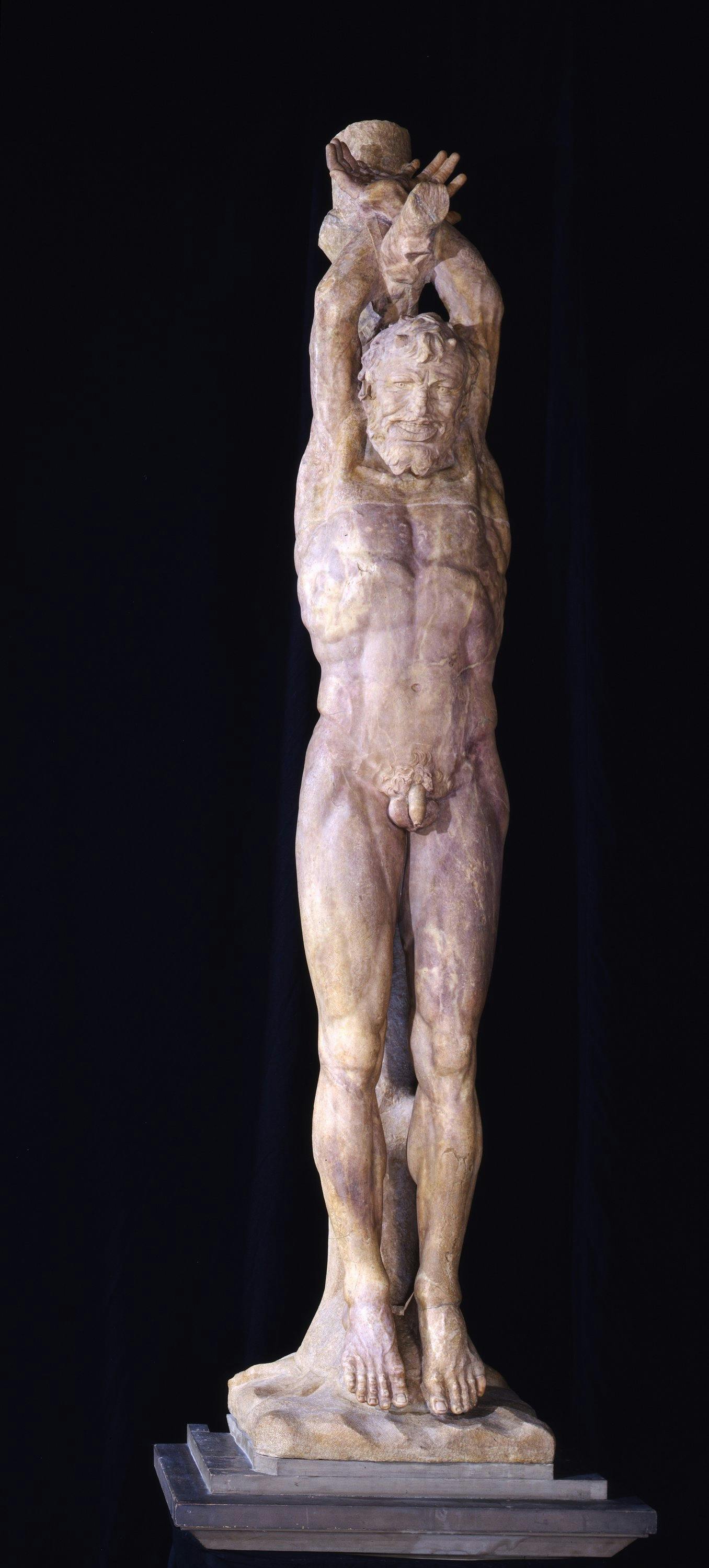Statue of Marsyas, red or asymmetrical type
Roman Art
The myth of Marsyas tells how the Phrygian satyr, after accidentally finding the double flute (diaulòs) invented by the goddess Athena, became so skilled at playing it that he challenged the god of music Apollo to a musical competition, being defeated. The statue depicts the very moment of the punishment awaiting Marsyas: the Silenus, while hanging by the wrists from a log, is about to be skinned alive by the god and contracts his face in an expression of fear mixed with pain. This episode of the myth was very popular in Roman times, partly due to the fact that it was described by Ovid in his Metamorphoses (Ovid, VI, vv. 382 - 400), and today we know of as many as 60 full-length replicas of the same subject.
The work preserved at the Uffizi belongs to the group of red replicas, which is distinguished from the white type by a more realistic and expressive style, often emphasised by the use of Pavonazzo marble or red paint, an allusion to the skinned body. This definition was later abandoned in favour of a division between symmetrical and asymmetrical type, the latter being associated with the red type and also with this Marsyas, which has its wrists crossed above the head and the torso and legs pointing to the right side. The asymmetrical style also exhibits a strong muscular tension that donates dynamism and is emotionally more involving.
The depictions of this theme on different mediums, all taken from the same model, suggest that the hanging Silenus was part of a sculptural group consisting of the figures of Apollo and the so-called Arrotino, the slave who took care of punishing the satyr, of which the Uffizi statue is the only full-relief copy known today.
Once located in the Palace of via Larga, in modern times this statue underwent various restorations. In particular, the work of Mino da Fiesole was recognised in the head.
A. Weis, The hanging Marsyas: the origin and history, University Microfilm International, Ph.D. dissertation, Ann Arbor, 1981; A. Weis, The hanging Marsyas and its copies. Roman innovations in a Hellenistic sculptural tradition, Roma, 1992a; M.Rodinò, Il supplizio di Marsia in Divina Simulacra. Capolavori di scultura classica della Galleria degli Uffizi, catalogo della mostra (Firenze, Gallerie degli Uffizi, 12 dicembre 2023 – 30 giugno 2024), a cura di F. Paolucci, Livorno, 2023, pp. 24 – 27 e bibliografia precedente; M. Rodinò, Statua dello Scita, cd. Arrotino in Divina Simulacra. Capolavori di scultura classica della Galleria degli Uffizi, catalogo della mostra (Firenze, Gallerie degli Uffizi, 12 dicembre 2023 – 30 giugno 2024), a cura di F. Paolucci, Livorno, 2023, pp. 28 – 33
Statue of Hanging Marsyas, white type
Roman Art
Knife Grinder (also known as the Scythian)
Roman art
